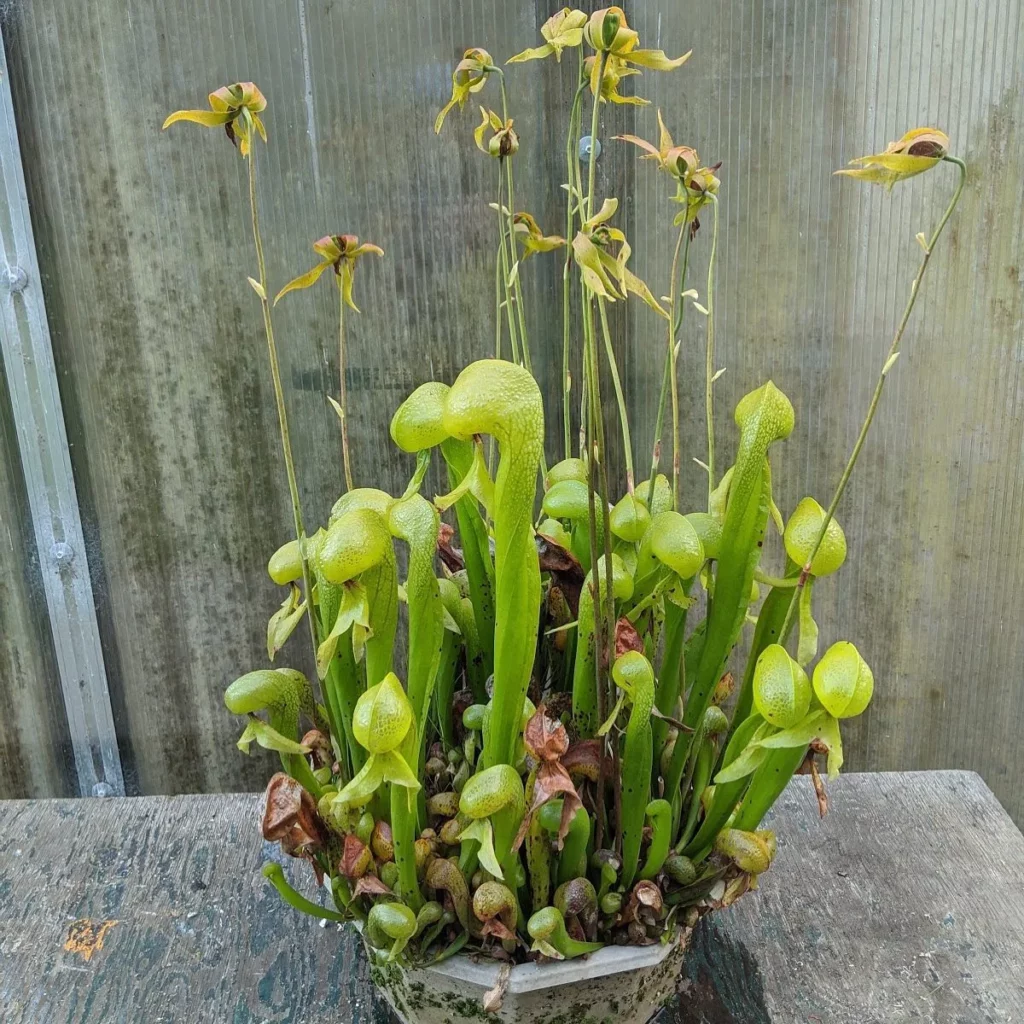Sarracenia minor, also known as the Hooded Pitcher Plant, boasts a unique and captivating appearance. The pitchers of this plant reach a height of approximately one foot and feature a prominent front seam. With their vibrant green color, copper-tinted top, and delicate, mild red venation, these pitchers are truly a sight to behold.
Appearance of Sarracenia minor

But it’s not just the color that sets them apart. The pitchers of Sarracenia minor have a distinctive shape that gives them a cheeky smile. The downturned mouth adds to the plant’s charm, while the lid of the pitcher folds over the mouth, earning it the name “hooded pitcher plant.”
What makes the appearance even more intriguing is the copious amount of nectar produced by the plant. The nectar runs up the pitcher and lines the thin peristome, creating the illusion of glistening lip gloss. It’s a fascinating feature that adds to the plant’s allure and visual appeal.
Light Requirements for Sarracenia minor
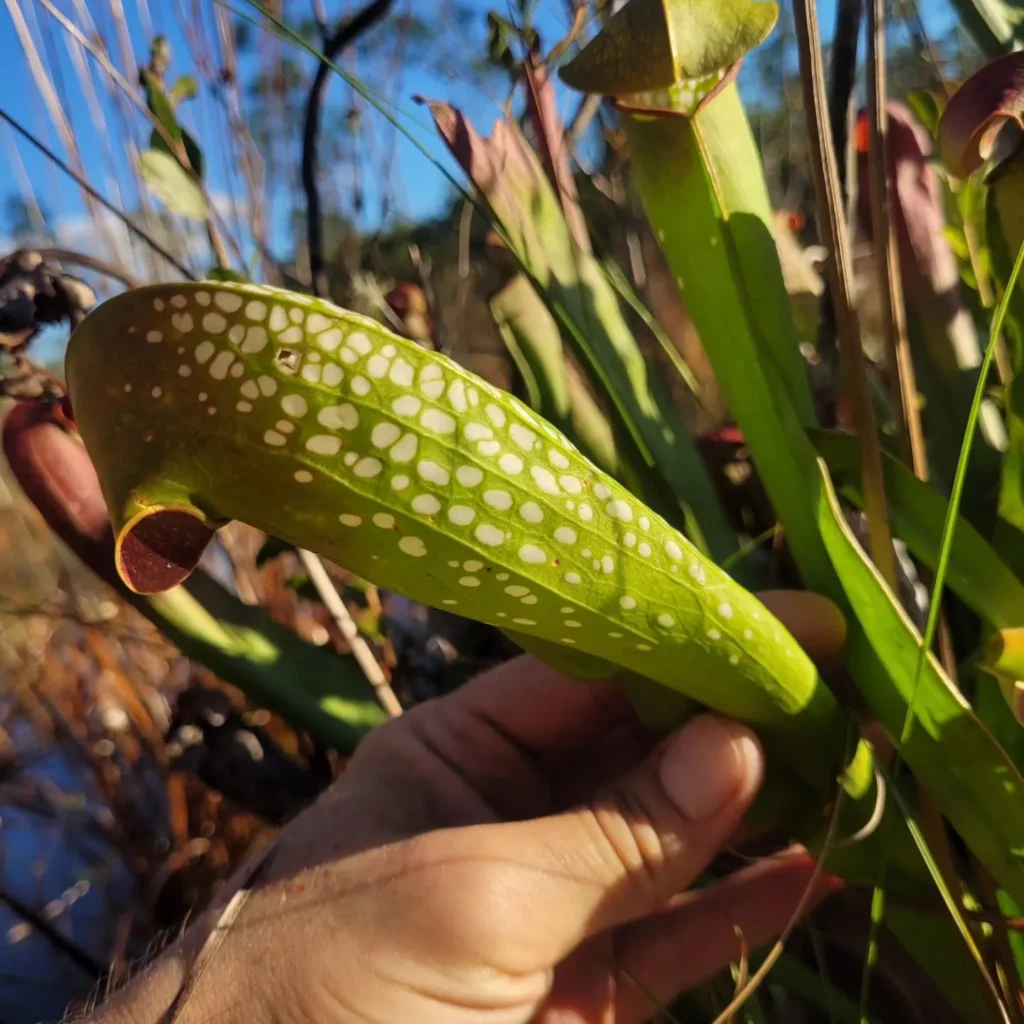
Sarracenia minor, the Minor Pitcher Plant, thrives in bright light conditions. When grown in an environment with ample sunlight, this carnivorous plant displays stunning features, including a copper-tinted top and thin red venation on its pitchers.
To ensure the healthy growth and development of Sarracenia minor, it is recommended to place the plant in a location where it can receive bright light throughout the day. This will enable the plant to develop its characteristic coloration and enhance its overall visual appeal.
Providing sufficient light is essential for Sarracenia minor as it plays a vital role in the plant’s photosynthesis process, which facilitates its nutrient absorption from trapped insects. By meeting its light requirements, you can help this fascinating plant thrive and continue its carnivorous habits.
Watering Sarracenia minor
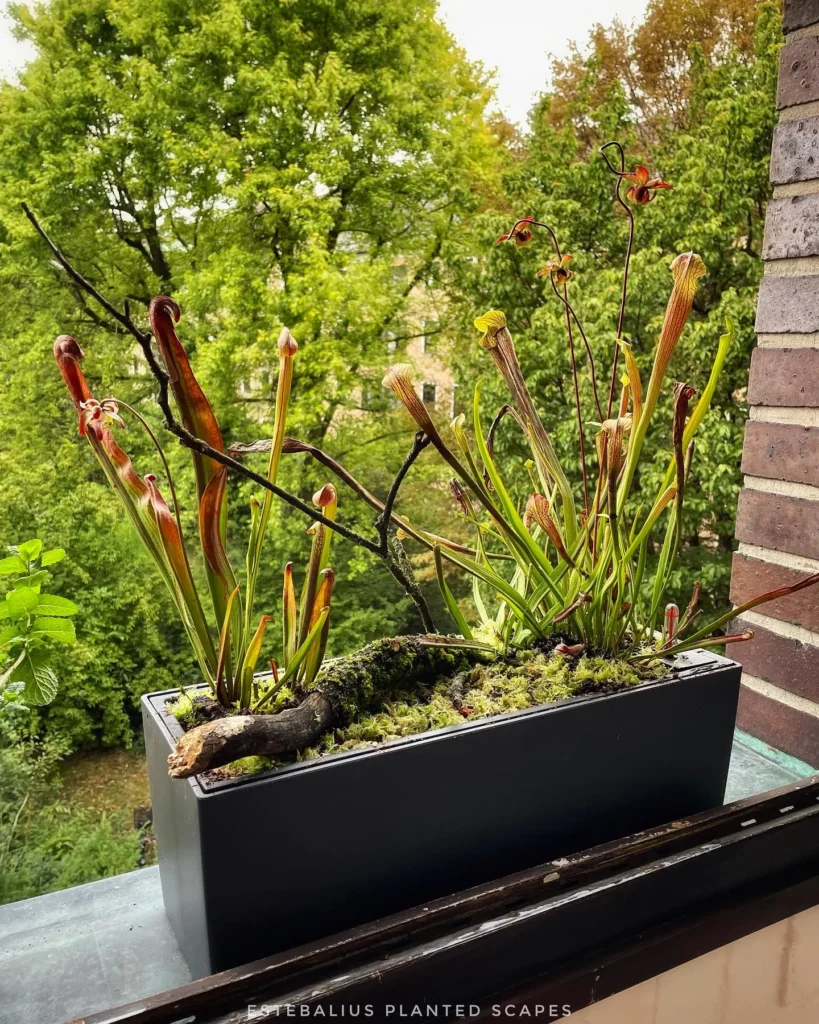
Sarracenia minor, also known as the Minor Pitcher Plant, has specific watering requirements to ensure its optimal growth. This fascinating carnivorous plant thrives in damp to wet conditions, making it an excellent choice for bog gardens or areas with high moisture levels.
No products found.
To provide the ideal environment for Sarracenia minor, it is recommended to grow it in a carefully prepared bog garden. This type of garden is characterized by acidic, humusy muck that remains consistently damp. The plant should never be allowed to dry out completely, as it needs constant moisture to survive.
It is crucial to ensure that the crown of the plant, where the leaves meet the roots, is not submerged below the waterline. While Sarracenia minor requires constant moisture, excessive waterlogging can lead to root rot and other issues.
Fertilizing Sarracenia minor
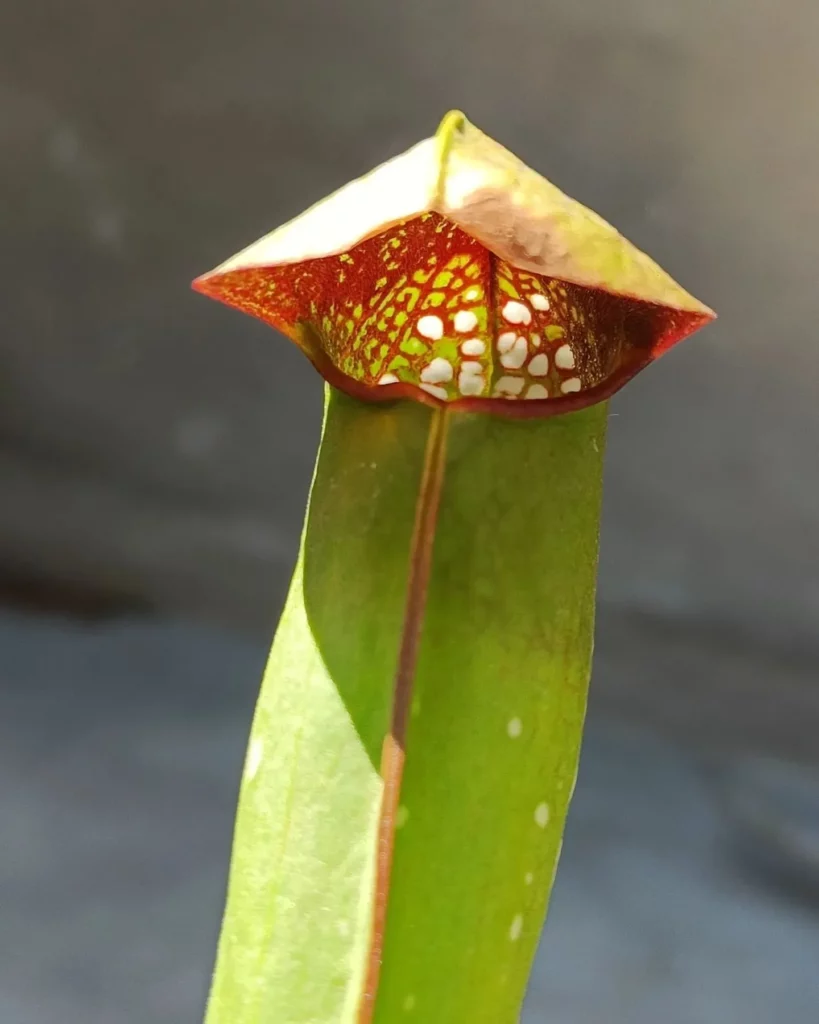
Sarracenia minor, being a carnivorous plant, has unique nutritional requirements. It is essential to understand the right approach to fertilizing this plant to ensure its health and well-being.
Avoid traditional fertilizers: Sarracenia minor should not be fertilized with potting soil or traditional fertilizers. These products can be harmful to the plant and may disrupt its natural growth.
Sensitivity to dissolved salts: Sarracenia minor is sensitive to dissolved salts, particularly those found in chlorinated water. To avoid any adverse effects on the plant, it is best to use rainwater or distilled water.
If you are growing Sarracenia minor in containers, you can use rainwater or distilled water instead of tap water. This will minimize the risk of exposing the plant to harmful substances.
Feeding considerations: While it may be tempting to add nutrients manually or feed the plant with food scraps, it is not recommended for Sarracenia minor. The plant cannot digest fats, and fertilizers can potentially burn it. Stick to the natural dietary habits of this carnivorous plant for optimal growth and development.
Potting Sarracenia minor

Sarracenia minor, also known as the Minor Pitcher Plant, can be successfully grown in containers, making it a versatile addition to any garden or indoor space. When potting Sarracenia minor, it is crucial to create the optimal growing conditions for this carnivorous plant to thrive.
No products found.
Firstly, it is important to avoid using potting soil or traditional fertilizers when potting Sarracenia minor. Instead, opt for a container with drainage holes and use Canadian peat or a mix of peat and sand or peat and perlite. This combination provides the plant with the necessary acidic soil conditions it prefers.
The acidic soil in the container is key to replicating the plant’s natural habitat. The peat or peat/sand mix helps maintain the appropriate pH level for optimal growth and development. This will ensure that the Minor Pitcher Plant receives the essential nutrients it needs to thrive.
When selecting a container for potting, choose one that allows for proper drainage to prevent waterlogging. The plant requires consistent damp to wet conditions, but standing water can lead to root rot and other issues. Ensure the container has drainage holes and use a saucer to catch excess water if necessary.
Seasonal Maintenance
During the winter months, the old leaves of Sarracenia minor naturally die down. It is best to wait until spring, just before the flowers emerge, to remove the foliage from the previous season. This will allow the plant to conserve energy and prepare for new growth.
Potting Sarracenia minor in the appropriate acidic soil mixture and providing proper drainage will create an ideal environment for the plant to thrive in a container. With the right care and maintenance, you can enjoy the unique beauty and striking pitcher formations of this fascinating carnivorous plant.
Propagation of Sarracenia minor

Sarracenia minor, also known as the Minor Pitcher Plant, can be propagated through rhizome division or seed germination.
Rhizome Division
One method of propagating Sarracenia minor is through rhizome division. This involves separating the plant’s rhizomes – underground stems that produce roots and shoots – to create new plants. Rhizome division is a relatively easy and effective method of reproduction. By carefully dividing the rhizomes, you can create multiple new plants that will grow and thrive independently.
Seed Germination
Another way to propagate Sarracenia minor is through seed germination. However, it’s important to note that growing the plant from seeds can be a longer process compared to rhizome division. It may take 4 to 5 years for the plant to flower when grown from seed.
If you choose this method, ensure that you provide the appropriate conditions for seed germination, including proper moisture, temperature, and light levels. Patience is key when growing Sarracenia minor from seeds, as it can take several years for the plant to reach its full potential.
Growth and Development of Sarracenia minor
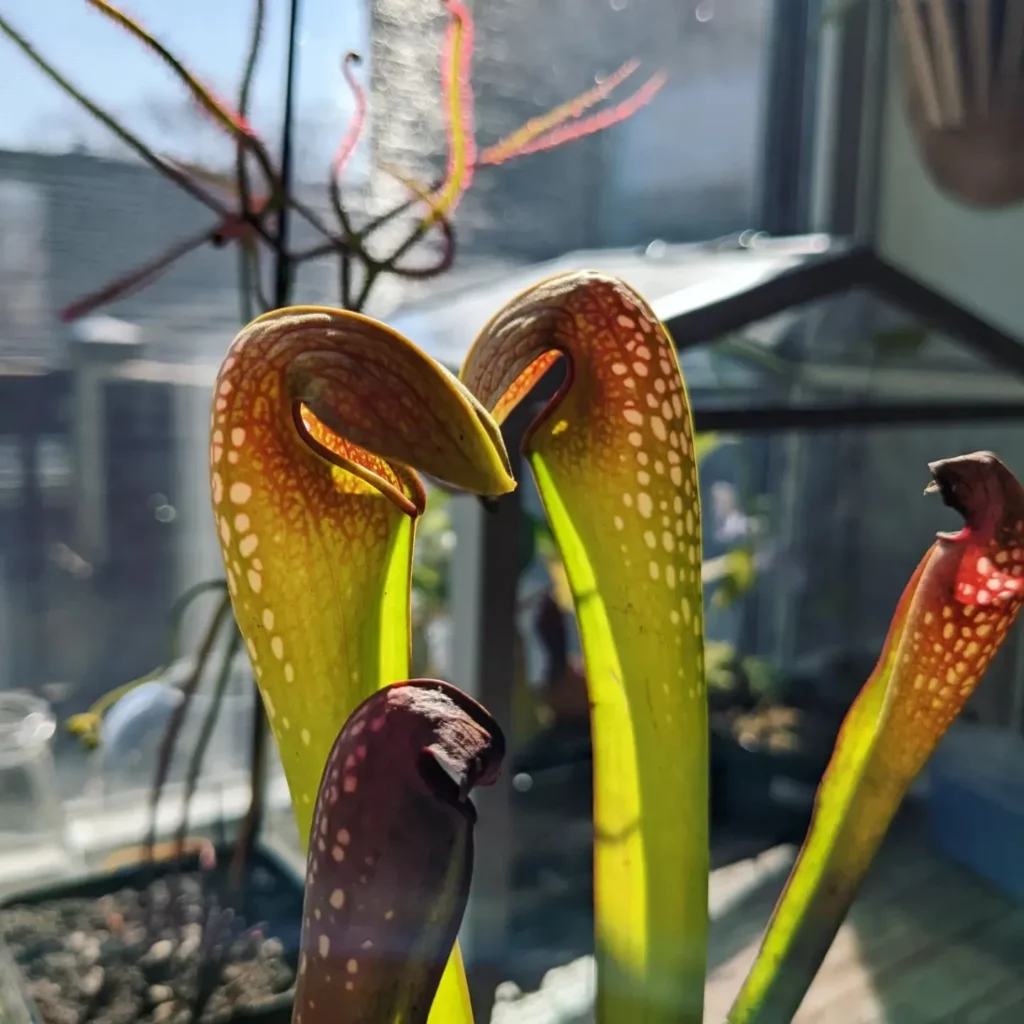
Sarracenia minor, like many plants, goes through periods of dormancy during the fall and continues until spring. During this time, you may notice that the leaves of your Sarracenia minor turn brown. This is a natural process and nothing to be alarmed about. To ensure the health of your plant, it is best to wait and remove the brown foliage in the spring, just before the flowers emerge.
Once the dormancy period ends and the spring season arrives, your Sarracenia minor will start its growth and development. This is when you can expect to see the emergence of new green pitchers and colorful venation. The vibrant pitchers and intricate patterns create a stunning display, adding to the seasonal interest of your Sarracenia minor.
Pests and Diseases of Sarracenia minor
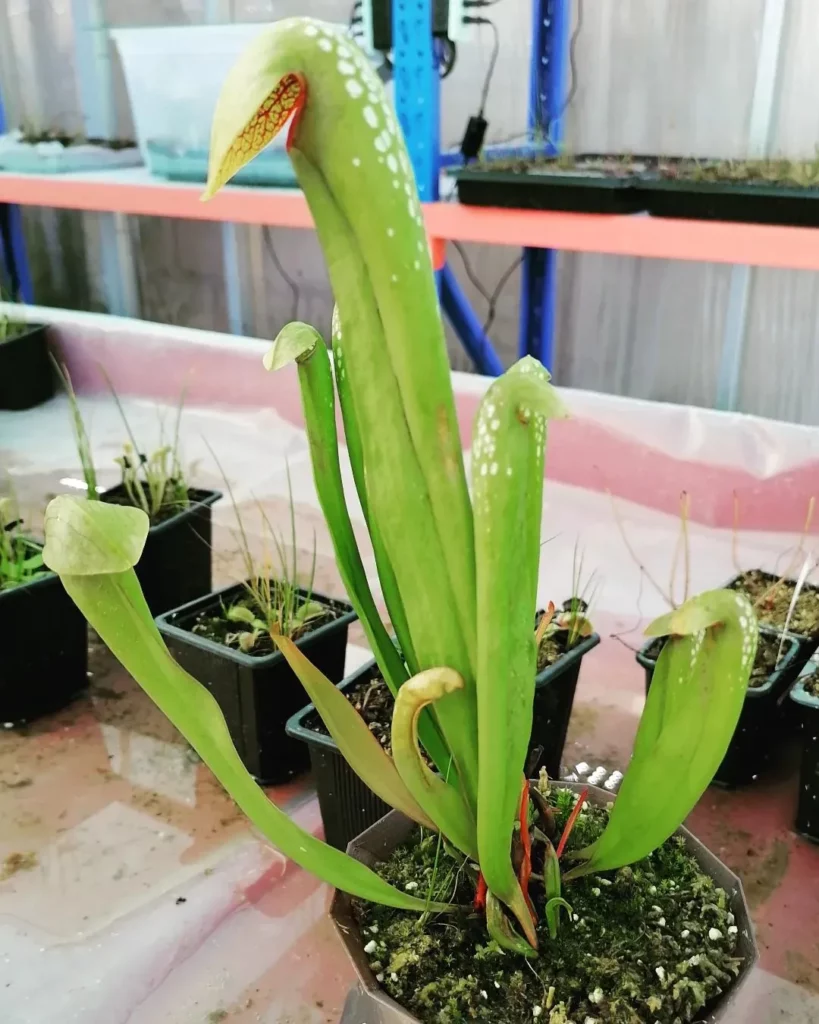
Sarracenia minor, like any other plant, can be vulnerable to various pests and diseases that can affect its growth and overall health. It is important to be aware of these potential issues to ensure the well-being of your Sarracenia minor.
Common pests that can infest this plant include aphids, scale insects, mealybugs, and moth larvae. These pests can cause damage to the leaves and pitchers if left uncontrolled. Regularly inspecting your plant and taking appropriate measures to control these pests is crucial for its protection.
In addition to pests, Sarracenia minor is also susceptible to certain diseases. Leaf spots are a common problem that can be caused by fungal or bacterial infections. These spots can appear as discolored areas on the leaves, affecting the plant’s aesthetic appeal.
Another potential disease that can affect Sarracenia minor is root rot. This condition occurs when the plant’s roots are infected by pathogens, leading to decay and the eventual deterioration of the plant’s health.
To prevent and manage these pests and diseases, it is important to regularly inspect your Sarracenia minor for any signs of infestation or infection.
Conservation of Sarracenia minor
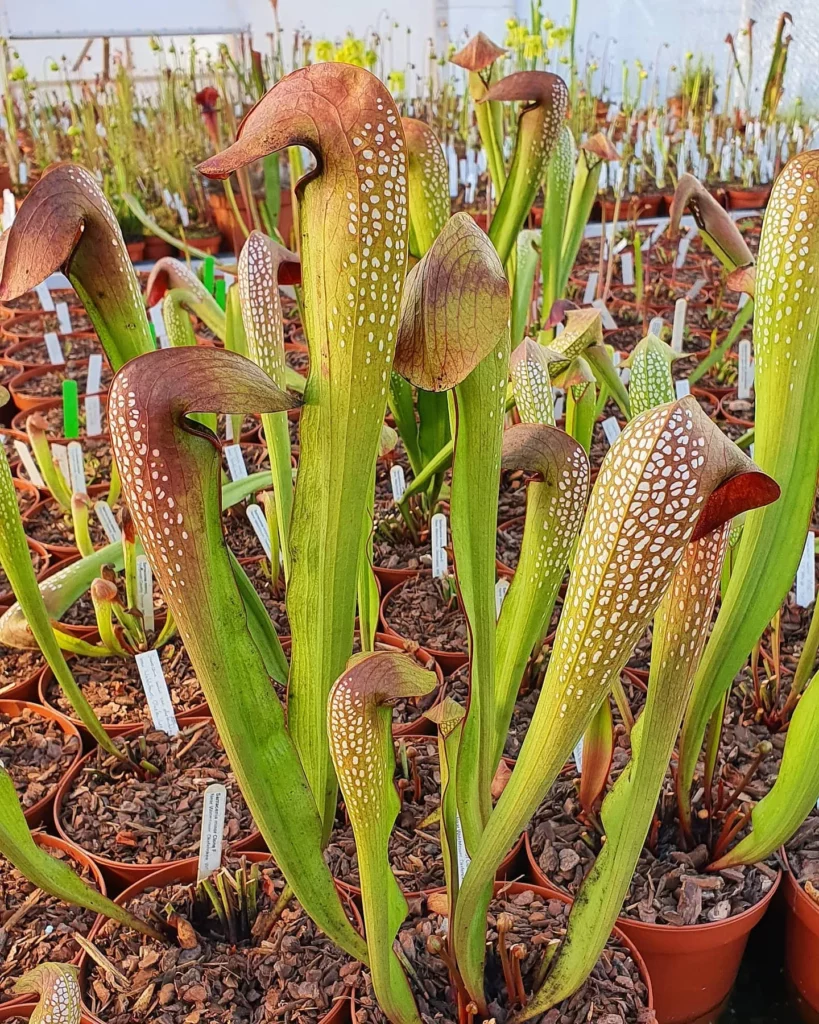
Sarracenia minor, also known as the Minor Pitcher Plant, is currently classified as an endangered species due to the loss of its natural habitat. Sadly, approximately 97.5% of Pitcher Plant habitats in the southeastern United States have been destroyed over the years.
To protect and preserve this unique plant, it is crucial to refrain from harvesting Sarracenia minor from the wild. Instead, obtain plants from reputable carnivorous plant nurseries that specialize in cultivation and conservation efforts. By purchasing from these sources, you contribute to the continued survival and conservation of the species.
The cultivation of Sarracenia minor can play a significant role in conservation initiatives.
By creating suitable environments for these plants to thrive, we can provide a sanctuary for the endangered species. Whether it’s in your home garden or in dedicated conservation areas, the cultivation of Sarracenia minor helps preserve its beauty and contributes to the overall conservation of endangered plants.
Dietary Habits of Sarracenia minor
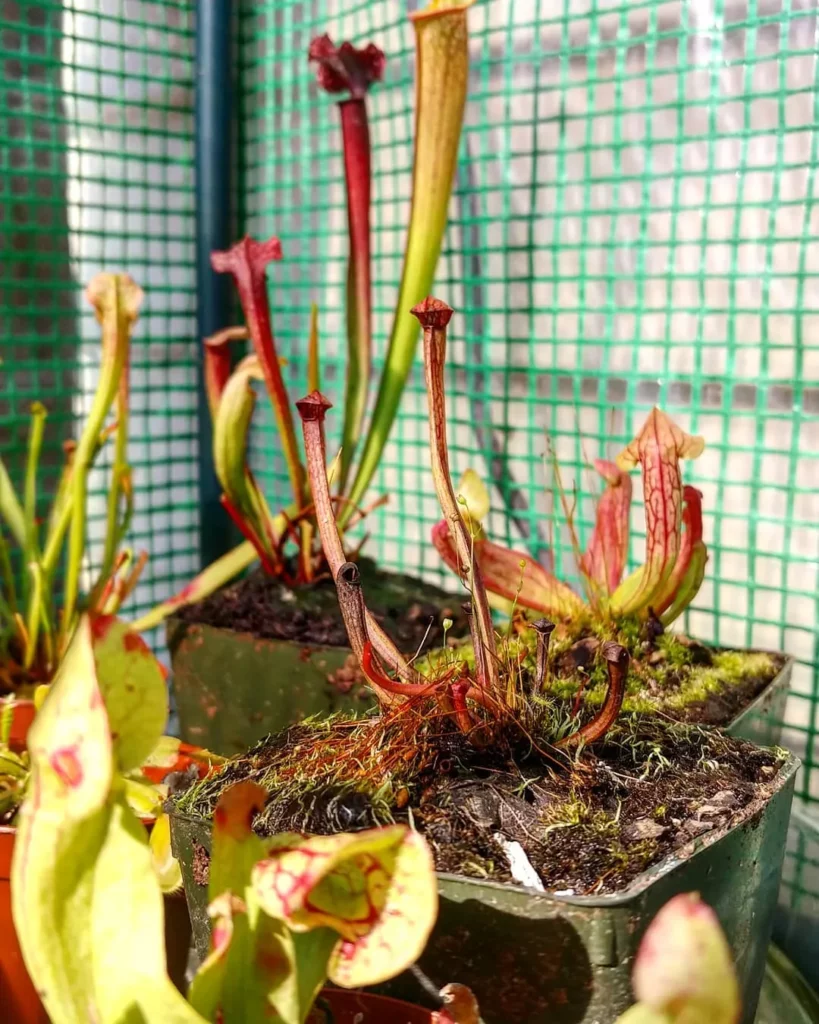
Sarracenia minor, a fascinating carnivorous plant, has unique dietary habits that set it apart from other plants. This extraordinary species relies on insects as its source of food, making it a true predator in the plant kingdom.
The Sarracenia minor lures unsuspecting insects with its copious amounts of sweet nectar, which acts as a powerful attractant. The translucent white patches on the leaves further entice insects, giving them the impression of an escape route. However, once inside the pitcher, the insects find themselves trapped with no means of escape.
With its clever design, the Sarracenia minor ensures that the insects it captures become its next meal. The trapped insects are slowly digested through the plant’s enzymatic secretions, breaking them down into essential nutrients. These nutrients are then absorbed by the plant, providing it with the sustenance it needs to thrive.
By depending on insects for its dietary needs, the Sarracenia minor demonstrates the unique adaptability of carnivorous plants. Its remarkable ability to trap and digest insects showcases the wonders of nature and adds to the allure of this captivating species.
What is Sarracenia minor?
Sarracenia minor, also known as the Minor Pitcher Plant or Hooded Pitcher Plant, is a carnivorous plant native to the Southeastern coastal areas of the United States.
What does Sarracenia minor look like?
The pitchers of Sarracenia minor are approximately one foot tall and have a pronounced front seam. They are primarily green, with a copper-tinted top and thin, mild red venation. The pitchers have a downturned mouth and a hood that folds over it, earning it the name “hooded pitcher plant.”
What are the light requirements for Sarracenia minor?
Sarracenia minor thrives in bright light conditions. It is recommended to place the plant in a location where it can receive ample sunlight to ensure its healthy growth and development.
How often should I water Sarracenia minor?
Sarracenia minor requires constant damp to wet conditions in terms of watering. It is best grown in a carefully prepared bog garden with an acidic, humusy muck that remains consistently damp.
Can I use potting soil to fertilize Sarracenia minor?
No, Sarracenia minor should not be fertilized with potting soil or traditional fertilizers, as these can be harmful to the plant. It is best to use rainwater or distilled water instead of tap water for watering.
How should I pot Sarracenia minor?
Sarracenia minor can be grown in containers using Canadian peat or a 50/50 mix of peat and sand or peat and perlite. The plant prefers acidic soil conditions and should be potted in a mixture that provides the appropriate pH levels.
How can I propagate Sarracenia minor?
Sarracenia minor can be propagated through rhizome division or by growing from seeds.
What is the growth and development cycle of Sarracenia minor?
Sarracenia minor goes through periods of dormancy in the fall when the leaves turn brown. It experiences growth and development during the spring and summer seasons when it produces its green pitchers and colorful venation.
What pests and diseases can affect Sarracenia minor?
Sarracenia minor can be susceptible to pests such as aphids, scale insects, mealybugs, and moth larvae. It can also be affected by leaf spots and root rot as potential diseases.
Why is Sarracenia minor an endangered species?
Sarracenia minor is an endangered species due to the loss of its natural habitat. Approximately 97.5% of Pitcher Plant habitats have been destroyed in the southeastern United States.
How does Sarracenia minor obtain nutrients?
Sarracenia minor is a carnivorous plant that feeds on insects. It attracts insects with its copious amounts of nectar and the appearance of its pitchers. Insects crawl into the pitcher, thinking it is a way out, but become trapped and ultimately digested by the plant.




